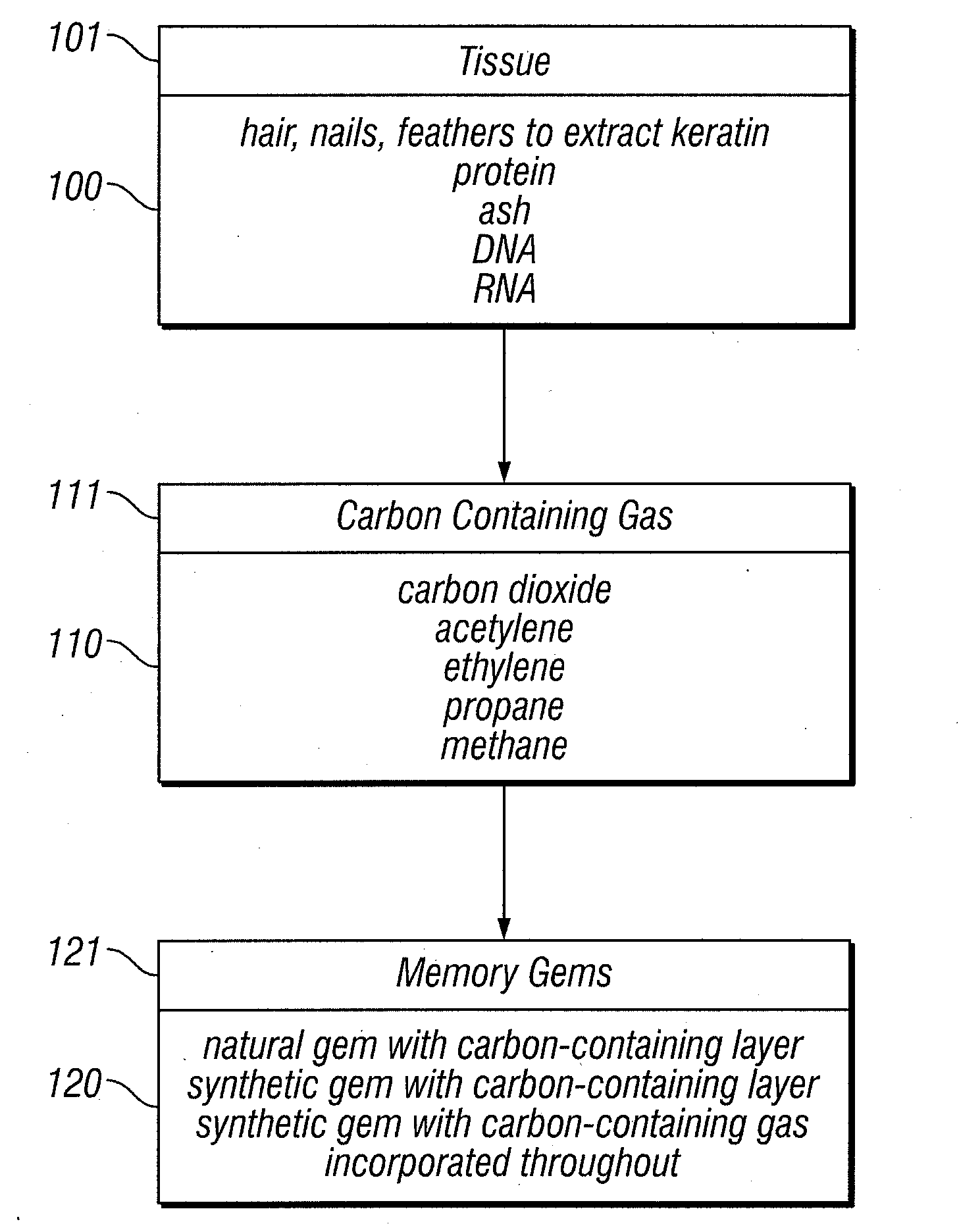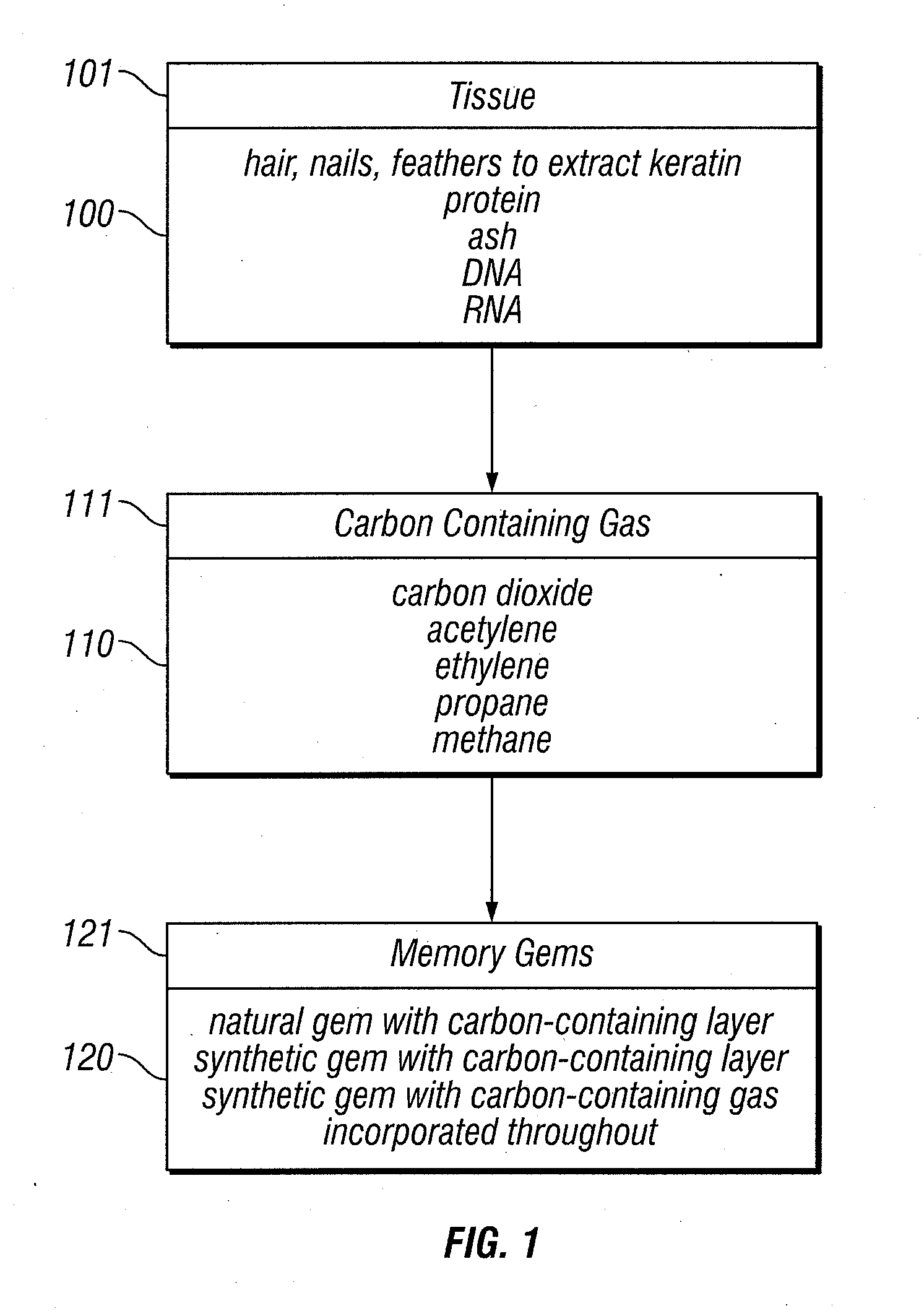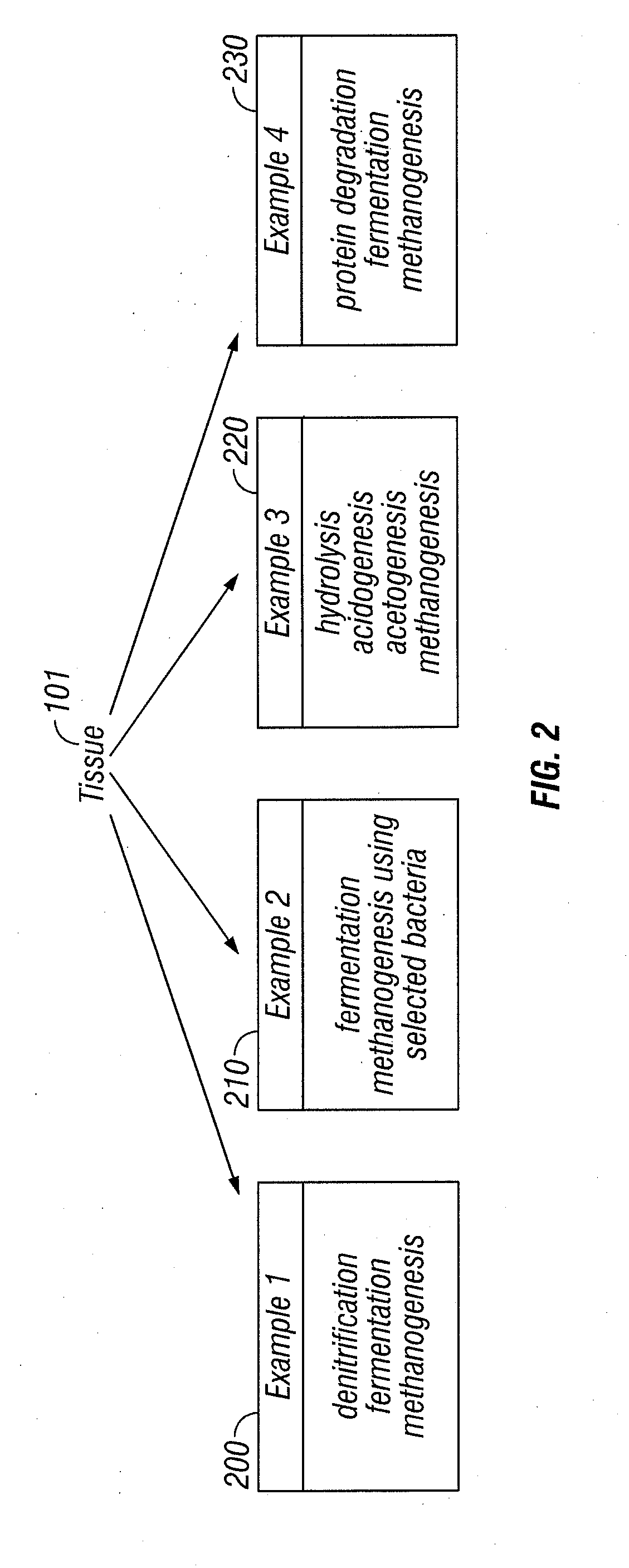Memory gemstones
a technology of memory gemstones and gemstones, applied in the field of memory gemstones, can solve problems such as devastating losses
- Summary
- Abstract
- Description
- Claims
- Application Information
AI Technical Summary
Benefits of technology
Problems solved by technology
Method used
Image
Examples
example 1
Fermentation and Methanogenesis Using Methanogenic Consortia to Convert Animal and Plant Tissues and Tissue Products, to Carbon-Containing Gas
[0032]Example 1 200 involves the steps of denitrification, fermentation, and methanogenesis using an anaerobic methanogenic consortia. Fermentation is the breakdown of chemicals into alcohols and acids in an anaerobic environment. One type of fermentation step is hydrolysis. Next, hydrolysis products are combined with methanogens to produce carbon-containing gas, such as, but not limited to, methane and carbon dioxide. The following is a specific protocol.
Specific Protocol to Produce Methane from Hair, Keratin and Other Tissues.
[0033]Extracting carbon from hair and other tissues rich in keratin is a challenge because the tissues degrade poorly under anaerobic conditions. Thus, before starting methanogenesis, denitrification and hydrolysis pretreatment is typically performed. These processes are not always necessary. In addition, as discussed i...
example 2
Fermentation Using Specific Methanogenic Bacteria, Either Engineered or Naturally Isolated, to Convert Tissues to Carbon-Containing Gas
[0046]As illustrated in FIG. 2, Example 2 210 is similar to the process outlined above in Example 1 200, but instead of using a methanogenic consortia, a specific methanogenic bacterial strain or two will be used. Specific conditions for growth and methanogenesis, such as pH and temperature variations, may vary and depends upon the methanogenic bacterial strain employed.
example 3
Use of Four-Stage Digestion Process for Converting Tissues to Carbon-Containing Gas
[0047]The above two examples use fermentation and methanogenesis. Example 3 220, as illustrated in FIG. 2, describes digestion. Anaerobic digestion is a biological process where organic matter is degraded to methane in an anaerobic environment. Digestion occurs in four steps: hydrolysis, acidogenesis, acetogenesis, and methanogenesis.
[0048]The four stages of digestion are illustrated in FIG. 3. Hydrolysis occurs when the organic reagent 300 is combined with acid-forming bacteria. Acid forming bacteria can be obtained from a variety of mechanisms, including heat treating anaerobic inoculums to deactivate methanogens and retain the acidogens. The bacteria break the keratin down into simple monomers. Next, during acidogenesis the monomers are broken down into alcohols 310 and fatty acids 310. During acetogenesis, bacteria known as acetogens convert the fatty acids 310 into acetic acid 320 with hydrogen 3...
PUM
| Property | Measurement | Unit |
|---|---|---|
| temperature | aaaaa | aaaaa |
| temperature | aaaaa | aaaaa |
| volume | aaaaa | aaaaa |
Abstract
Description
Claims
Application Information
 Login to View More
Login to View More - R&D
- Intellectual Property
- Life Sciences
- Materials
- Tech Scout
- Unparalleled Data Quality
- Higher Quality Content
- 60% Fewer Hallucinations
Browse by: Latest US Patents, China's latest patents, Technical Efficacy Thesaurus, Application Domain, Technology Topic, Popular Technical Reports.
© 2025 PatSnap. All rights reserved.Legal|Privacy policy|Modern Slavery Act Transparency Statement|Sitemap|About US| Contact US: help@patsnap.com



